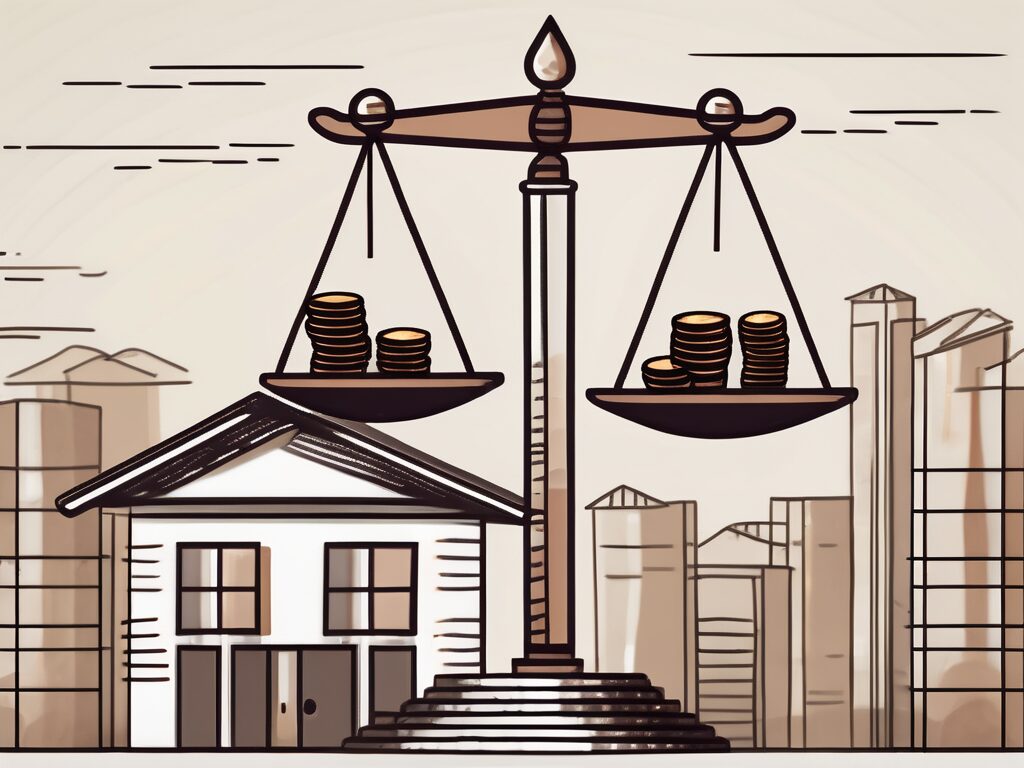
Agent A-Team or Solo Superhero? Finding the Right Real Estate Partner for Your Selling Journey in Wildwood Florida
When it comes to selling your home in Wildwood, Florida,…
January 29, 2024
In the world of real estate and mortgage lending, the loan-to-value ratio (LTV) is a fundamental concept that every aspiring homeowner should understand. Your LTV ratio plays a critical role in determining your ability to secure financing, the type of loan you may qualify for, and the overall cost of borrowing. In this comprehensive guide, we will demystify the concept of LTV, explore its implications, and provide you with the knowledge to make informed decisions when it comes to your mortgage.
Before we dive into the specifics of LTV, let’s start with a basic definition. The loan-to-value ratio is a financial metric used by lenders to assess the risk associated with granting a mortgage loan. It represents the percentage of the property’s appraised value that the lender is willing to finance. For example, if the appraised value of a home is $200,000 and the lender offers a loan of $160,000, the LTV ratio would be 80%.
Why is the LTV ratio important? Well, it provides lenders with an indication of the borrower’s equity or the amount of money the borrower has invested in the property. A higher LTV ratio indicates a higher risk for the lender, as the borrower has less equity at stake. On the other hand, a lower LTV ratio suggests a greater level of financial stability for the borrower.
Let’s explore the significance of the LTV ratio in more detail. When lenders evaluate mortgage applications, they consider various factors to determine the risk associated with granting a loan. The LTV ratio plays a crucial role in this assessment process. It helps lenders understand the level of financial commitment the borrower has made towards the property.
For instance, imagine two borrowers applying for a mortgage loan. Borrower A has an LTV ratio of 90%, while Borrower B has an LTV ratio of 70%. Borrower A is seeking a loan that covers 90% of the property’s appraised value, indicating a higher level of financing and lower equity. On the other hand, Borrower B is only seeking a loan that covers 70% of the property’s appraised value, suggesting a higher level of personal investment and greater equity.
Based on these LTV ratios, lenders can assess the risk associated with each borrower. Borrower A, with a higher LTV ratio, may be considered a riskier borrower as they have less equity at stake. In contrast, Borrower B, with a lower LTV ratio, may be viewed as a more financially stable borrower due to their higher equity in the property.
It’s important to note that lenders typically have maximum LTV ratio limits. These limits vary depending on factors such as the type of loan, the borrower’s creditworthiness, and the lender’s risk appetite. For example, a lender may have a maximum LTV ratio of 80% for conventional loans, meaning they are willing to finance up to 80% of the property’s appraised value.
By setting maximum LTV ratio limits, lenders mitigate their risk exposure. If a borrower defaults on their loan, the lender can potentially recover their investment by selling the property. However, if the LTV ratio is too high, the lender may face challenges in recouping the full loan amount in the event of a foreclosure or forced sale.
Furthermore, the LTV ratio can also impact the borrower’s mortgage terms and interest rates. Generally, borrowers with lower LTV ratios may be eligible for more favorable loan terms and lower interest rates. This is because they present a lower risk to the lender and have a greater stake in the property.
On the other hand, borrowers with higher LTV ratios may face stricter loan terms and higher interest rates. Lenders may impose additional requirements, such as private mortgage insurance (PMI), to protect themselves against the increased risk associated with a higher LTV ratio.
In summary, the loan-to-value ratio (LTV) is a crucial metric used by lenders to assess the risk associated with granting a mortgage loan. It provides insights into the borrower’s equity and financial stability. A higher LTV ratio indicates a higher risk for the lender, while a lower LTV ratio suggests a greater level of financial stability for the borrower. Lenders set maximum LTV ratio limits to mitigate risk exposure and may offer more favorable loan terms to borrowers with lower LTV ratios. Understanding the concept of LTV is essential for both borrowers and lenders in the mortgage lending process.
In addition to the LTV ratio, it’s essential to understand another related metric – combined loan-to-value ratio (CLTV). The CLTV ratio takes into account multiple loans secured against the same property. For example, if you have an existing mortgage and are applying for a home equity loan, the CLTV ratio would consider the combined amount of both loans relative to the property’s appraised value.
Knowing your CLTV ratio is crucial, as it provides lenders with a clearer picture of the overall risk involved. It helps them assess whether you have sufficient equity to cover multiple loan obligations. While lenders typically have specific requirements for maximum CLTV ratios, it’s important for borrowers to understand how this metric can impact their loan eligibility and terms.
When it comes to understanding the CLTV ratio, it’s important to consider the different factors that can affect it. One factor is the appraised value of the property. The appraised value is determined by a professional appraiser who evaluates the property’s worth based on various factors such as location, condition, and market trends. This value serves as the basis for calculating the CLTV ratio.
Another factor that can impact the CLTV ratio is the amount of existing loans secured against the property. If you already have a mortgage on the property, that loan amount will be included in the CLTV calculation. Additionally, if you have any other loans, such as a home equity loan or line of credit, those amounts will also be considered. The combined total of all these loans relative to the appraised value will determine the CLTV ratio.
Understanding the CLTV ratio is not only important for lenders but also for borrowers. It allows borrowers to assess their own financial situation and determine if they have enough equity in their property to take on additional loans. If the CLTV ratio is too high, it may indicate that the borrower has limited equity and may not be able to handle the additional financial obligations.
Furthermore, the CLTV ratio can also impact the terms and conditions of the loan. Lenders often have specific requirements for maximum CLTV ratios, and borrowers with higher ratios may face stricter loan terms, such as higher interest rates or additional fees. On the other hand, borrowers with lower CLTV ratios may be eligible for more favorable loan terms, as they are considered to have a lower risk profile.
It’s important to note that the CLTV ratio is just one of the many factors lenders consider when evaluating loan applications. Other factors such as credit score, income, and employment history also play a significant role in the approval process. However, understanding the CLTV ratio and its implications can help borrowers make informed decisions and improve their chances of securing favorable loan terms.
Now that we have a good understanding of LTV and CLTV, let’s explore what constitutes a healthy LTV ratio. The ideal LTV ratio will vary depending on the loan type, lender, and the borrower’s financial profile. While there are no fixed rules, certain thresholds are commonly considered:
A healthy LTV ratio is an important factor in determining the risk associated with a mortgage loan. It represents the percentage of the property’s appraised value that is being financed. A lower LTV ratio indicates a lower risk for the lender, as the borrower has a larger equity stake in the property. On the other hand, a higher LTV ratio suggests a higher risk, as the borrower has less equity and is relying more on borrowed funds.
Exploring Different Types of Mortgage Loans
Before delving deeper into LTV ratios, it’s essential to familiarize ourselves with the various types of mortgage loans available. Each loan type has its own eligibility criteria, benefits, and requirements. Let’s explore a few popular choices:
Conventional loans are a staple in the mortgage industry, offered by private lenders and backed by either Fannie Mae or Freddie Mac. These loans typically require a higher credit score and down payment, but they offer greater flexibility in terms of loan amounts and repayment options.
When it comes to LTV ratios, borrowers with strong credit and a higher down payment can often secure a loan with an LTV ratio of 80% or lower. This means they would only be financing 80% or less of the property’s appraised value.
It’s important to note that lenders may have their own requirements for LTV ratios, and borrowers should consult with their lender to understand the specific guidelines for the loan they are seeking.
The Federal Housing Administration (FHA) offers government-backed loans that are well-suited for first-time homebuyers or those with lower credit scores. FHA loans have more lenient qualifying criteria, a lower down payment requirement, and allow for higher LTV ratios. In some cases, borrowers may be eligible for an FHA loan with an LTV ratio of up to 96.5%.
These higher LTV ratios can be advantageous for borrowers who may not have a large down payment saved or who have a higher debt-to-income ratio. However, it’s important to consider the potential impact of a higher LTV ratio on the overall cost of the loan, including mortgage insurance premiums.
For qualified veterans, active-duty service members, and their spouses, the U.S. Department of Veterans Affairs (VA) offers VA loans. These loans have several advantages, including no down payment requirement and more relaxed credit standards. The LTV ratio for VA loans can be as high as 100%, allowing borrowers to finance the entire purchase price of the home.
VA loans are designed to provide affordable homeownership options for those who have served or are currently serving in the military. The ability to obtain a loan with a 100% LTV ratio can be a significant benefit, especially for borrowers who may not have substantial savings for a down payment.
The U.S. Department of Agriculture (USDA) provides loans to eligible borrowers purchasing homes in designated rural areas. USDA loans offer competitive interest rates and require no down payment. With an LTV ratio of up to 100%, these loans make homeownership more accessible for individuals and families in rural communities.
USDA loans are specifically designed to promote rural development and provide affordable housing options in areas that may not be served by traditional lenders. The ability to finance the entire purchase price of a home with a 100% LTV ratio can be particularly beneficial for borrowers in rural areas where housing costs may be lower.
It’s important for borrowers to carefully consider their financial situation, long-term goals, and the specific requirements and benefits of each loan type when determining the appropriate LTV ratio for their mortgage loan. Consulting with a knowledgeable mortgage professional can help borrowers make informed decisions and select the loan option that best suits their needs.
Now that we are well-versed in various loan types and their corresponding LTV ratios, it’s time to consider the question: should you aim for a high or low LTV ratio? The answer depends on your financial circumstances, goals, and risk tolerance.
When determining your preferred LTV ratio, it’s important to consider your down payment. The down payment is the initial cash payment made towards the purchase price of the property. It directly affects your LTV ratio, with a higher down payment resulting in a lower ratio.
Use our handy down payment calculator to explore various scenarios and see how your down payment affects your LTV ratio:
Let’s say you’re planning to purchase a $300,000 home. With a 20% down payment of $60,000, your loan amount would be $240,000. This would result in an LTV ratio of 80%. However, if you were able to make a 30% down payment of $90,000, your loan amount would decrease to $210,000, resulting in a lower LTV ratio of 70%.
If your goal is to minimize your down payment and achieve a higher LTV ratio, it’s essential to identify lenders that specialize in low- or no-down-payment mortgage options. Here are some leading lenders to consider:
If you are aiming for a lower LTV ratio and a higher down payment, effective saving strategies can help you reach your goal:
By diligently implementing these strategies, you can accelerate your down payment journey and achieve your desired LTV ratio.
As you can see, the loan-to-value ratio is a critical factor in the mortgage lending process. Understanding how LTV ratios work, exploring different loan types, and making informed decisions regarding your down payment will empower you on your path to homeownership. Remember to consult with a trusted mortgage professional who can guide you through the intricacies of LTV ratios and help you navigate the complex world of mortgage lending.

If you want the Richr team to help you save thousands on your home just book a call.
 Book a call
Book a call